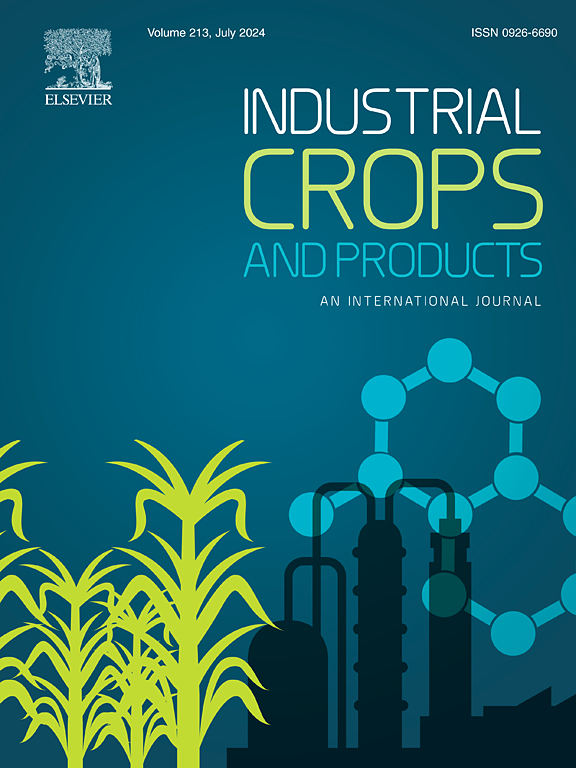利用多项式模型预测百里草精油和百里草精油对家蝇的杀虫协同作用。
IF 5.6
1区 农林科学
Q1 AGRICULTURAL ENGINEERING
引用次数: 0
摘要
本研究探讨了混合实验设计建模方法在百里香精油杀虫活性分析中的适用性,重点研究了百里香精油主要成分对家蝇的协同作用。采用气相色谱-质谱分析了12种市售百里香精油的化学成分,发现其主要成分为α-蒎烯、对伞花烃、γ-松蒎烯、芳樟醇、百里酚和十一烷酸甲酯。Cox组份效应分析确定了对伞花素、γ-萜烯和百里香酚是这些精油的有效成分。利用这些化合物,在给定的剂量下,构建了死亡率的响应面。结果表明,对伞花烃、γ-萜烯和百里香酚的二元混合物均具有协同作用。随后使用二次规划算法进行优化,以确定在预定剂量下百里香油杀虫活性最大化的最佳比例。该算法确定了对伞花素:γ-萜烯:百里香酚的最佳比例为32:23:45,最高死亡率为87.5 %。将三种毒性最小的油(死亡率分别为36.7%、40.0%和3.3% %)混合使用,也给出了可行的解决方案,表明了该算法在质量控制中的实用性。本研究展示了基于模型的植物杀虫剂利用策略的潜力,提供了有效和准确的方法来识别有效成分及其协同作用。这种未经探索的方法可以通过最大化和确保植物性杀虫剂的功效,为促进植物性杀虫剂的商业化提供机会。本文章由计算机程序翻译,如有差异,请以英文原文为准。
Utilization and validation of the polynomial models to predict insecticidal synergy in the essential oils of Thymus vulgaris L. and Thymus zygis L. against Musca domestica L.
This study investigated the applicability of mixture experimental design-based modeling approach to analyze insecticidal activity of thyme essential oils, particularly focusing on the synergistic interaction of their major constituents against Musca domestica. Chemical compositions of twelve commercially available thyme oils were analyzed using GC-MS, revealing their major constituents to be α-pinene, p-cymene, γ-terpinene, linalool, thymol, and undecanoic acid methyl ester. Cox’s component effect analysis pinpointed p-cymene, γ-terpinene, and thymol, as the active ingredients in the oils. Using these compounds, the response surface of mortality in terms of the composition was constructed at a given dosage. The quadratic model better fitted the data than the linear one, indicating synergistic interactions among all binary mixtures of p-cymene, γ-terpinene, and thymol. Subsequent optimization using quadratic programming algorithms facilitated the determination of optimal ratios for maximizing thyme oil's insecticidal activity at a predetermined dosage. The algorithm identified the optimal ratio of p-cymene:γ-terpinene:thymol to 32:23:45, resulting in the highest mortality of 87.5 %. Mixing the three least toxic oils (mortality of 36.7, 40.0, and 3.3 %) using the algorithm also presented viable solutions, suggesting its utility in quality control. This study demonstrates the potential of model-based strategies for utilizing botanical insecticides, offering efficient and accurate ways to identify the active ingredients and their synergistic interactions. This unexplored approach could provide an opportunity for boosting the commercialization of botanical insecticides by maximizing and ensuring their efficacy.
求助全文
通过发布文献求助,成功后即可免费获取论文全文。
去求助
来源期刊

Industrial Crops and Products
农林科学-农业工程
CiteScore
9.50
自引率
8.50%
发文量
1518
审稿时长
43 days
期刊介绍:
Industrial Crops and Products is an International Journal publishing academic and industrial research on industrial (defined as non-food/non-feed) crops and products. Papers concern both crop-oriented and bio-based materials from crops-oriented research, and should be of interest to an international audience, hypothesis driven, and where comparisons are made statistics performed.
 求助内容:
求助内容: 应助结果提醒方式:
应助结果提醒方式:


